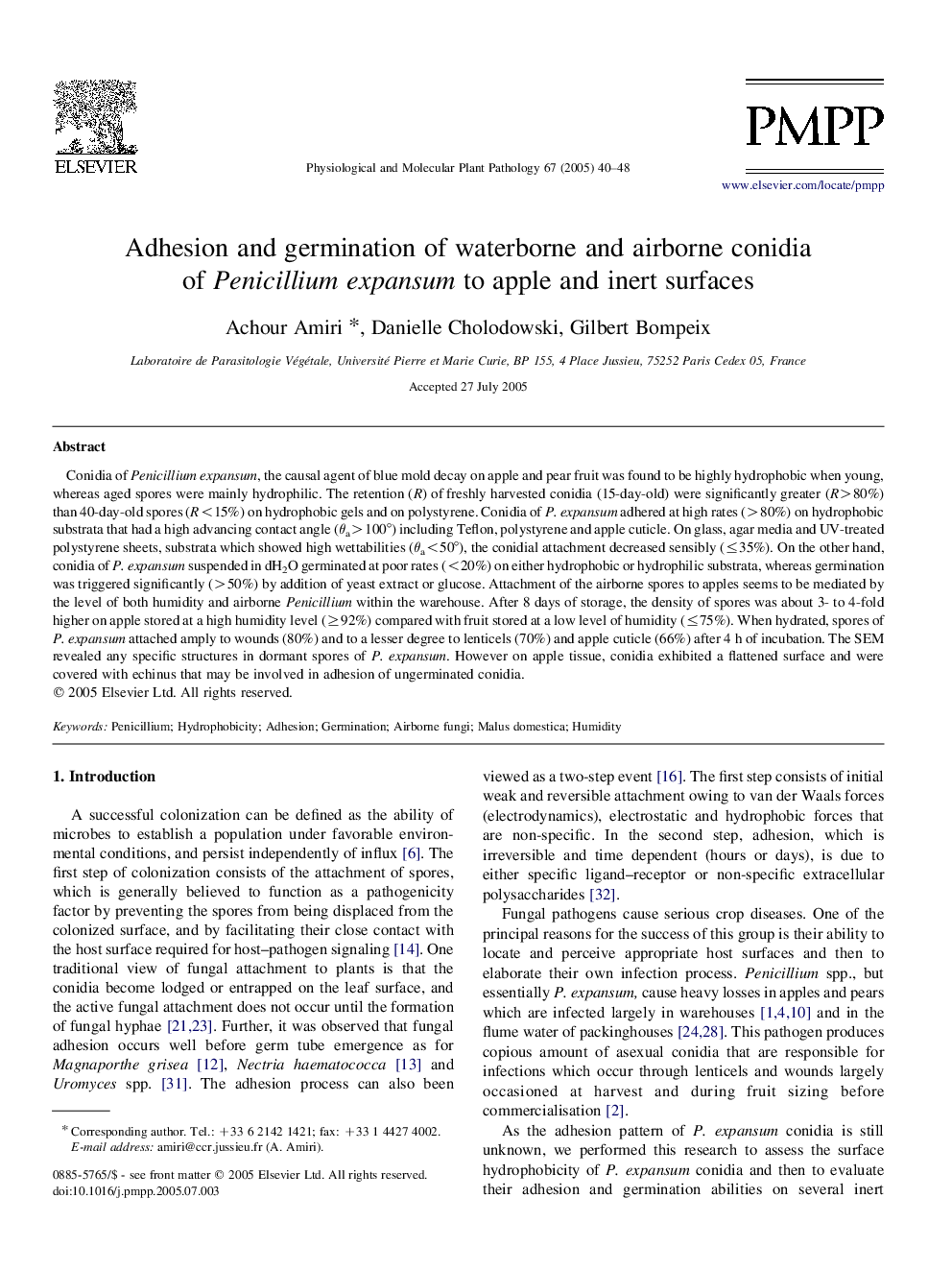| Article ID | Journal | Published Year | Pages | File Type |
|---|---|---|---|---|
| 9144616 | Physiological and Molecular Plant Pathology | 2005 | 9 Pages |
Abstract
Conidia of Penicillium expansum, the causal agent of blue mold decay on apple and pear fruit was found to be highly hydrophobic when young, whereas aged spores were mainly hydrophilic. The retention (R) of freshly harvested conidia (15-day-old) were significantly greater (R>80%) than 40-day-old spores (R<15%) on hydrophobic gels and on polystyrene. Conidia of P. expansum adhered at high rates (>80%) on hydrophobic substrata that had a high advancing contact angle (θa>100°) including Teflon, polystyrene and apple cuticle. On glass, agar media and UV-treated polystyrene sheets, substrata which showed high wettabilities (θa<50°), the conidial attachment decreased sensibly (â¤35%). On the other hand, conidia of P. expansum suspended in dH2O germinated at poor rates (<20%) on either hydrophobic or hydrophilic substrata, whereas germination was triggered significantly (>50%) by addition of yeast extract or glucose. Attachment of the airborne spores to apples seems to be mediated by the level of both humidity and airborne Penicillium within the warehouse. After 8 days of storage, the density of spores was about 3- to 4-fold higher on apple stored at a high humidity level (â¥92%) compared with fruit stored at a low level of humidity (â¤75%). When hydrated, spores of P. expansum attached amply to wounds (80%) and to a lesser degree to lenticels (70%) and apple cuticle (66%) after 4 h of incubation. The SEM revealed any specific structures in dormant spores of P. expansum. However on apple tissue, conidia exhibited a flattened surface and were covered with echinus that may be involved in adhesion of ungerminated conidia.
Related Topics
Life Sciences
Agricultural and Biological Sciences
Plant Science
Authors
Achour Amiri, Danielle Cholodowski, Gilbert Bompeix,
